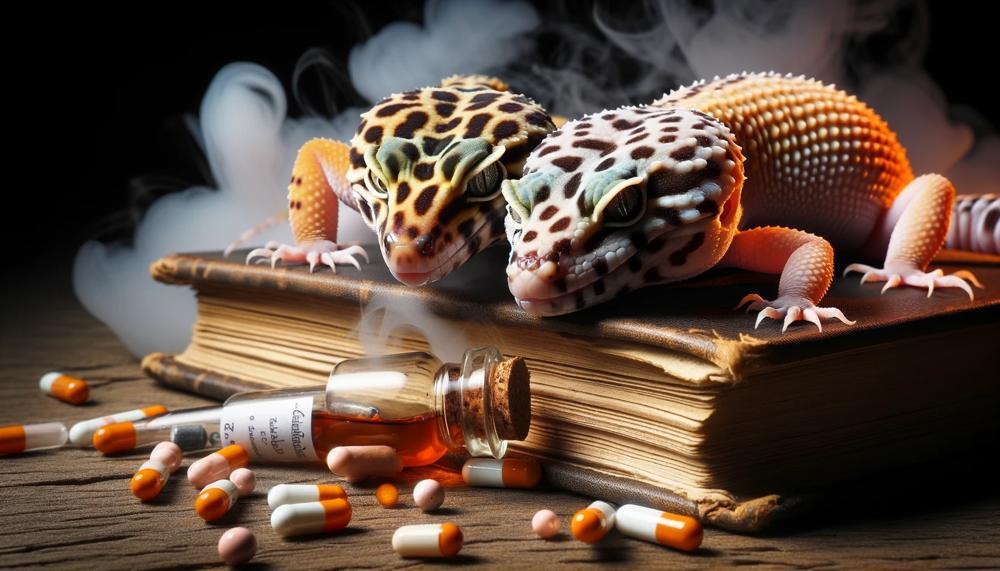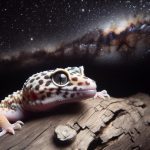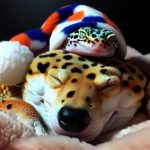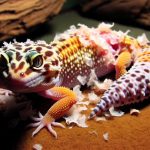These small, vibrant creatures captivate with their unique patterns and docile nature, making them ideal companions for both novice and experienced pet owners. However, amidst their growing popularity, one question frequently surfaces, stirring curiosity and concern: Are leopard geckos poisonous?
This question isn’t just for the cautious parent or the intrigued animal lover; it’s a critical exploration for anyone considering adding a leopard gecko to their home. In the following article, we dive deep into the world of leopard geckos, shedding light on this pressing question and offering essential insights that every potential and current owner should know.
Our aim is not only to dispel myths but also to provide a comprehensive understanding of these fascinating creatures.
Key Takeaways:
- Safety First: We’ll debunk the myths surrounding leopard geckos and toxicity, providing peace of mind to owners and enthusiasts.
- Understanding Leopard Geckos: Insights into the natural behavior and characteristics of leopard geckos, enhancing your knowledge and appreciation of these pets.
- Care and Maintenance: Essential tips on properly caring for leopard geckos, ensuring a safe and healthy environment for them to thrive.
By the end of this article, you’ll be equipped with the knowledge needed to confidently engage with leopard geckos, whether you’re considering adopting one or simply curious about these intriguing reptiles.
Join us as we embark on this enlightening journey, and discover the truth behind the question that piques the interest of so many.
Contents
- 1 Avoid chemical cleaners and air fresheners around your leopard gecko’s cage
- 2 Do not use cedar, pine, or other scented wood shavings as bedding material
- 3 Make sure to avoid any insecticides that may be present in their food
- 4 Keep an eye out for any plastic or rubber toys that could contain toxins such as phthalates or bisphenol A (BPA)
- 5 Monitor humidity levels in the terrarium – too high of a humidity can be toxic to leopard geckos
- 6 Conclusion
Avoid chemical cleaners and air fresheners around your leopard gecko’s cage
To safeguard the health of your leopard gecko, certain chemicals must be steered clear of in their vicinity. Below is a table detailing specific chemicals to avoid and the rationale for doing so:
| Chemical Type | Examples | Reasons to Avoid |
| Air Fresheners | Sprays, Plug-ins, Scented Oils | Contain volatile organic compounds (VOCs) harmful to geckos’ respiratory systems |
| Cleaning Agents | Bleach, Ammonia-based Cleaners | Harsh fumes can cause respiratory issues and skin irritation in geckos |
| Bedding Material | Cedar, Pine Shavings | Natural oils in these woods can harm geckos’ respiratory and skin health |
| Insecticides | Sprays, Baits | Toxic to geckos, especially if they consume insects exposed to these chemicals |
| Plasticizers | Phthalates, BPA in Toys | Potentially harmful if ingested or if they leach into the gecko’s environment |
| Humidity Control | Excessive Humidifiers | Improper humidity levels can be detrimental to gecko’s health |
Leopard geckos thrive in an environment free from harmful substances. Instead of using chemical cleaners, opt for milder alternatives like soap and water. In terms of bedding, paper-based products or coconut husk fibers are better options.
By focusing on natural pest control and maintaining ideal humidity levels with a hygrometer, you can create a safe haven for your gecko, promoting a long and healthy life.
Do not use cedar, pine, or other scented wood shavings as bedding material
Leopard geckos thrive in environments that mimic their natural habitat, which does not include potent scents or chemical irritants.
The use of cedar, pine, or other scented wood shavings as bedding can be harmful to these small reptiles due to the following reasons:
| Respiratory Issues | Wood shavings from cedar and pine release aromatic oils | These oils can irritate the sensitive respiratory systems of leopard geckos, leading to difficulty breathing or chronic respiratory conditions. |
| Skin Irritation | Natural oils and compounds found in these woods | Can lead to skin irritation or allergic reactions, damaging the delicate skin of leopard geckos. |
| Toxicity | Phenols found in cedar and pine | Are toxic and can affect the liver and nervous systems of leopard geckos if inhaled or ingested over time. |
Instead of these scented shavings, it’s safer to use bedding materials like paper-based products, coconut husk fibers, or specially formulated reptile carpets. These alternatives provide a safe, non-toxic, and comfortable environment for leopard geckos, ensuring their wellbeing and longevity.
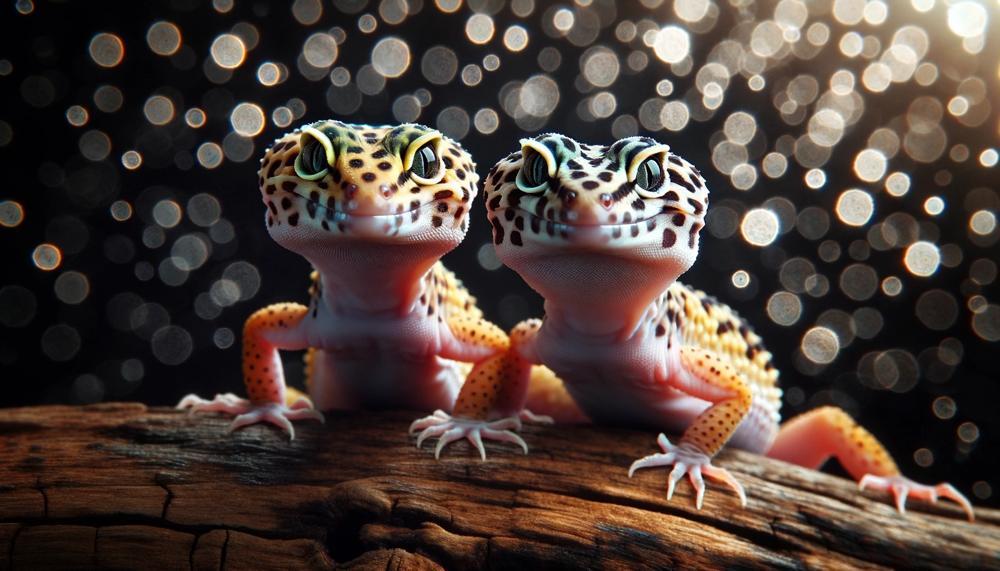
Remember, the health and safety of your gecko starts with the choices you make for their living space.
Make sure to avoid any insecticides that may be present in their food
Ensuring your leopard gecko’s food is free from harmful insecticides involves a blend of savvy shopping, prep work, and a dash of vigilance. Here’s a guide, chock-full of tidbits, to keep those pesky chemicals at bay.
Know Your Bug Source
First off, always source your critters from reputable dealers. These folks know their bugs and keep them clean and healthy.
Avoid the temptation to snag a quick snack from the garden or wild – you never know what’s been sprayed out there.
Pre-feed Your Prey
Before these insects become gecko grub, give them a feast of their own. Offer them pesticide-free greens and veggies.
This not only purges any nasties but also boosts their nutritional value, making them a veritable superfood for your scaly pal.
Calcium Dusting
A little sprinkle of calcium powder not only combats dietary deficiencies but also adds an extra layer of clean eating. Ensure the powder is pure, without added chemicals or flavors.
Table of Insect Choices and Tips
Here’s a quick rundown of the best picks and practices:
| Insect Type | Feeding Tips | Special Notes |
| Crickets | Feed with pesticide-free veggies 24 hours before serving. | Choose the right size to avoid choking hazards. |
| Mealworms | Dust with calcium powder before serving. | Use sparingly if your gecko leans towards the pudgy side. |
| Wax Worms | Consider as a treat due to high-fat content. | Great for picky eaters or to add variety. |
| King Worms | Offer occasionally, keep them lean and mean. | Too much fat can lead to health issues. |
Routine Check-ups
Lastly, keeping an eye on your gecko’s overall health can offer clues about their diet. Regular vet visits will keep you two steps ahead of any potential dietary mishaps.
Keep an eye out for any plastic or rubber toys that could contain toxins such as phthalates or bisphenol A (BPA)
Parents should be especially vigilant about certain types of plastic and rubber toys due to the potential presence of harmful toxins like phthalates and BPA. The main culprits to watch out for include:
| Type of Plastic | Common Uses in Toys | Potential Toxins |
| Polyvinyl Chloride (PVC) | Flexible toys, dolls, some types of swimming aids | Phthalates |
| Polycarbonate | Clear toys, teething rings, plastic bottles | Bisphenol A (BPA) |
| Natural Latex Rubber | Chew toys, balloons, rubber ducks | Latex Proteins (Allergens) |
Monitor humidity levels in the terrarium – too high of a humidity can be toxic to leopard geckos
Keeping tabs on the humidity inside a terrarium is not just about ticking a box; it’s crucial for the health of leopard geckos. These resilient little reptiles thrive in dry environments, and when the air gets too damp, it spells trouble.
Why High Humidity Harms Leopard Geckos
High humidity levels are more than just uncomfortable for leopard geckos; they’re a breeding ground for problems. These geckos hail from arid regions, where dry climates are the norm. When their living space mimics a tropical rainforest rather than a desert, several issues crop up:
- Respiratory Infections: Just as cold and damp weather can make us prone to coughs, leopard geckos can suffer from respiratory issues in overly humid conditions. Their lungs aren’t made for moist air, and this can lead to difficulty breathing or more serious lung infections.
- Skin Infections: Dampness on the skin isn’t just uncomfortable; it’s unhealthy. High humidity can encourage the growth of fungi and bacteria, leading to skin infections. These conditions can be challenging to treat and cause discomfort or pain to your gecko.
| Problem | Cause | Effect on Leopard Geckos |
| Respiratory Infections | High Humidity | Difficulty breathing, lung infections |
| Skin Infections | Moist environment | Discomfort, pain, and potential health complications |
| Shedding Issues | Improper humidity levels | Difficulty shedding, which can lead to stress or injury |
Remember, while leopard geckos are indeed hardy, they’re also delicate in their own right. Their environment plays a big part in their health and happiness. By keeping an eye on humidity and making adjustments as needed, you’re not just avoiding potential toxins; you’re ensuring your gecko lives a long, happy life.
Conclusion
In the enchanting world of exotic pets, leopard geckos emerge as both a marvel and a mystery, captivating enthusiasts with their gentle demeanor and striking patterns. The question of whether these beloved reptiles are poisonous has stirred much curiosity, leading to an essential exploration for potential and current owners alike. Through our comprehensive journey, we’ve debunked myths, offered a deeper understanding of leopard gecko care, and illuminated the importance of a toxin-free environment for these delicate creatures.
Ensuring the safety of leopard geckos requires vigilance against chemical hazards, wise choices in bedding, meticulous selection and preparation of food, and cautious selection of toys. Steering clear of harmful substances, fostering a habitat that mirrors their natural dry environments, and maintaining optimal humidity levels are paramount for their well-being. Embracing natural alternatives for pest control and avoiding exposure to dangerous chemicals protect not just our scaly friends but also the humans who cherish them.
As guardians of leopard geckos, our role transcends basic care; it’s about crafting a sanctuary that nurtures their health and happiness. This commitment to understanding and safeguarding these creatures ensures a harmonious coexistence and underscores the joy and responsibility of caring for such exquisite beings.

